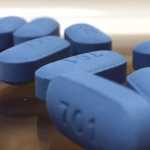Indigenous cisgender men are two times more likely to be hospitalized for any reason than white men, and Indigenous cisgender women are two and a half times more likely to be hospitalized than their white counterparts, according to a study published in the journal AIDS.
The analysis is based on data from the North American AIDS Cohort Collaboration on Research and Design (NA-ACCORD), Previous data from this collaboration offered good news on how long it took people to start antiretroviral treatment after diagnosis.
But the study by Thibaut Davy-Mendez, PhD, of Gillings School of Global Public Health at the University of North Carolina at Chapel Hill, and colleagues found results that were much more troubling.
Unfortunately, the new findings fit in with longstanding disparities in health care and health outcomes among Native American and Indigenous Canadian communities and white communities. For instance, earlier this year, data showed that between 2014 and 2018, new HIV diagnoses in Native American communities jumped by 21%.
Among the 27,085 participants at five of the more than 20 collaborative clinical sites in NA-ACCORD included in the analysis, there were 21,036 hospitalizations. Some people were hospitalized more than once, and, for the sake of this study, same-day procedures without an overnight stay were not considered as hospitalizations. Of the total participants, 80% were men, 33% were white and 99% were cisgender. Just 8% of all white participants were cisgender women, while cisgender men made up 91%.
Only 1% of participants were Indigenous, accounting for just 320 of the 27,085 participants. But this group had the lowest CD4 count at enrollment in the cohort, at 307, and they were the least likely to have a viral load below 400, at 35%. For comparison, white participants had a baseline CD4 count of 425, and 52% had a viral load below 400, while Black participants had a baseline CD4 count of 350, and 39% had a viral load below 400.
Hospitalizations were not primarily due to AIDS-defining illnesses. Indeed, one in four participants were hospitalized for non-AIDS-defining infections—the most common reason for hospitalization for everyone. But after that, the leading reasons for hospitalizations differed. While 1 in 10 participants were hospitalized for cardiovascular causes overall, for Black and multiracial women, the second most common cause was psychiatric conditions. For Indigenous and Asian women, the second most common cause was pregnancy.
White and Asian cisgender men had the lowest hospitalization rates overall, and Black and Latina cisgender women had the highest.
The good news is that hospitalizations declined over time, from 23 per 100 person-years of follow-up in 2005 to just 13 per 100 person-years a decade later. But the rates were much higher among transgender and Indigenous cisgender people, for whom the rates per 100 person-years were 25 for transgender participants and Indigenous cisgender men and 42 for Indigenous cisgender women. White cisgender women, who experienced a 7% drop in hospitalizations between 2005 and 2015, were the main beneficaries of this trend. However, rates also dropped 6% for Black cisgender men and 5% for Black and Latina cisgender women.
Overall, unadjusted all-cause hospitalizations were 1.46 times higher for Black cisgender men than their white counterparts and 1.99 times higher for Indigenous cisgender men. Only Asian cisgender men had a hospitalization rate lower than their white peers, at a risk that was 38% lower than that of white men. While Latina and Black cisgender women’s hospitalization rates were on par with white cisgender women, Indigenous women were 2.55 times more likely to be hospitalized than white women. After adjusting for age, viral load and CD4 count, Indigenous women’s risk was still 82% higher than white cisgender women’s but substantially lower than unadjusted averages.
“Differences in HIV treatment outcomes likely contributed to the hospitalization disparities we observed,” wrote Davy-Mendez and colleagues. “Prior studies have shown that women and transgender patients versus men and Black and Indigenous [people] versus white people living with HIV are likelier to experience unsuppressed viral loads or viral rebound. HIV care interruptions occur more frequently among Black and Indigenous [people] than white people living with HIV.”
Click here to read the study abstract.
Click here for more news about health equity and news about Native Americans and HIV.







Comments
Comments